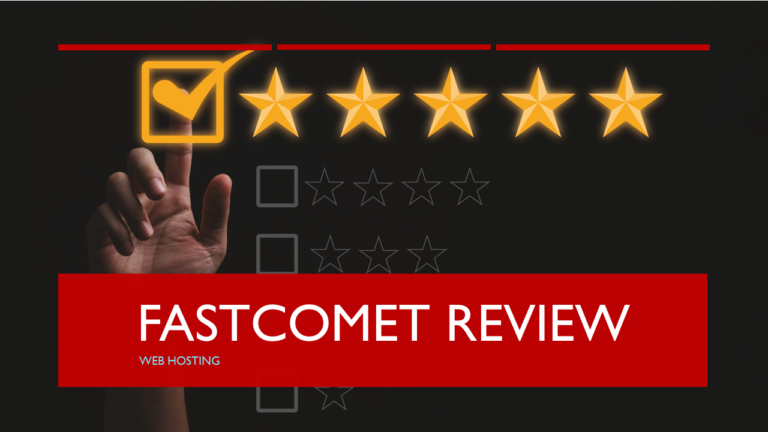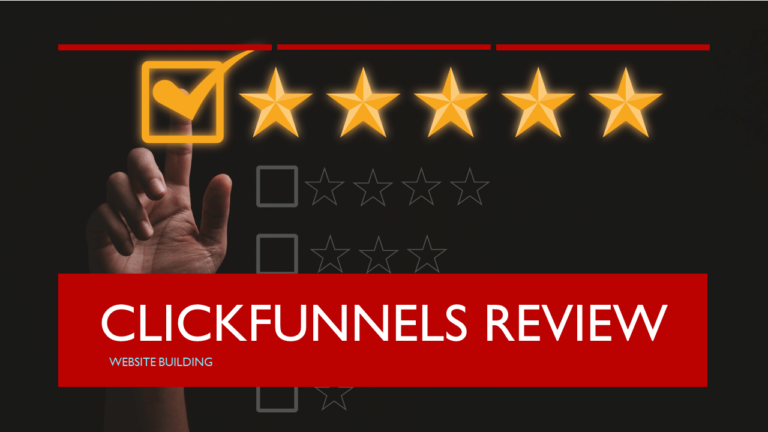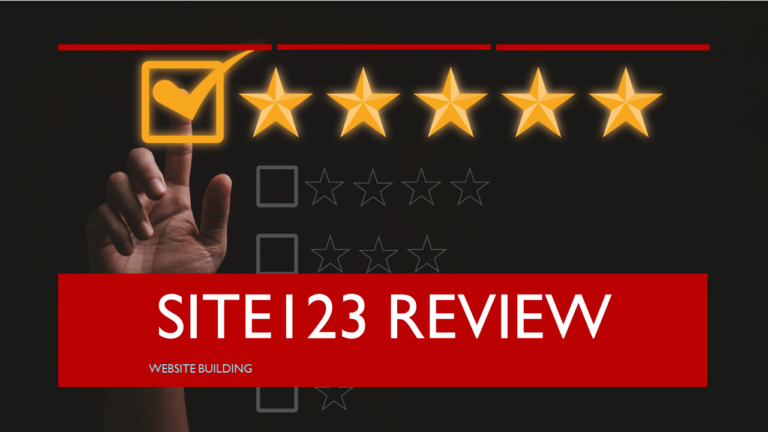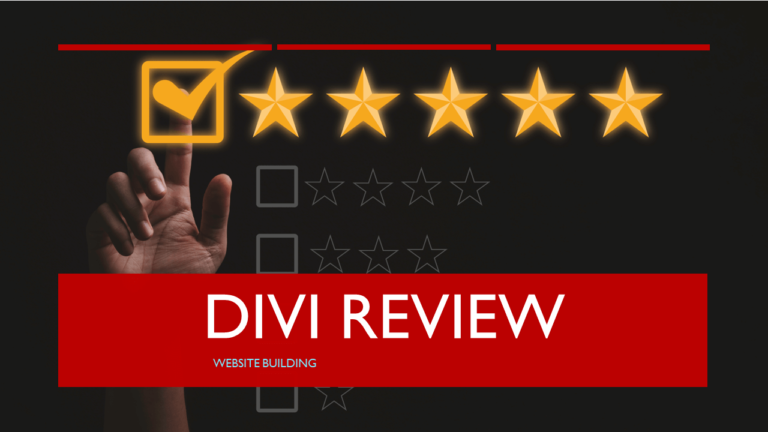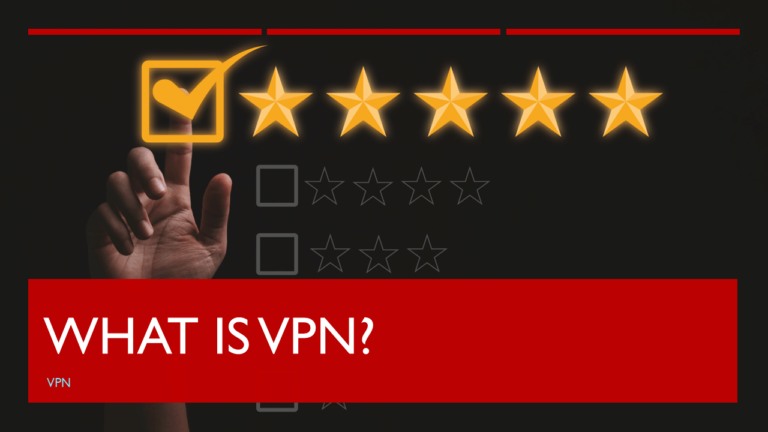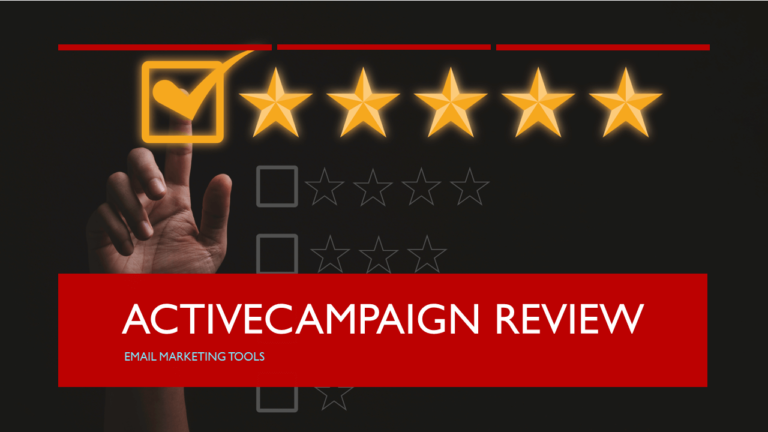What Is SEO?
Search Engine Optimization (SEO) is a fundamental aspect of digital marketing that revolves around enhancing a website’s visibility and ranking on search engine results pages (SERPs). In today’s highly competitive online landscape, where millions of websites are vying for attention, SEO acts as a powerful tool to ensure that your content doesn’t get lost in the digital noise.
SEO Definition:
At its core, SEO involves a series of strategies and techniques designed to improve a website’s organic (non-paid) search engine ranking. When a user types a query into a search engine like Google, SEO helps ensure that your website appears among the top results, increasing the likelihood of users clicking on your site. It’s about making your website more accessible, understandable, and appealing to both users and search engines.
Importance of SEO in Digital Marketing:
In the realm of digital marketing, SEO is a cornerstone. With the majority of online experiences beginning with a search engine, the visibility and credibility of your website are directly impacted by your SEO efforts. A well-optimized site not only attracts more visitors but also builds trust and authority, crucial elements for converting visitors into customers or followers. Moreover, SEO provides valuable insights into customer behavior, helping businesses understand what their audience is searching for online.

SEO Meaning and Significance:
SEO isn’t just about manipulating search engine algorithms; it’s about creating a seamless user experience. By optimizing your website, you’re not only catering to search engines but, more importantly, to your audience. It involves various practices such as keyword research, content optimization, link building, and technical optimizations. These practices collectively ensure that your website is user-friendly, loads quickly, and provides relevant and high-quality content.
In summary, SEO is the driving force behind online visibility and digital success. By understanding and implementing SEO best practices, businesses and website owners can reach a broader audience, increase organic traffic, and achieve their goals in the competitive online landscape. As we delve deeper into this topic, we will explore the strategies, techniques, and best practices that make SEO a vital component of any digital marketing strategy.
SEO Strategies and Methods
SEO strategies and methods are the techniques employed to optimize a website and improve its visibility on search engine results pages (SERPs). These strategies are essential for driving organic traffic, enhancing online presence, and increasing the credibility of a website. Here’s a breakdown of key SEO strategies and methods:
1. Overview of SEO Strategies: SEO strategies encompass a wide range of techniques, both on-page and off-page, that are aimed at improving a website’s search engine ranking. These strategies involve optimizing various elements of a website to make it more appealing to search engines and users alike. Some of the fundamental SEO strategies include:
a. Keyword Research: Identifying relevant and high-traffic keywords related to your business or content. Effective keyword research forms the foundation of SEO and helps in creating targeted content.
b. Content Optimization: Creating high-quality, relevant, and engaging content around chosen keywords. This includes optimizing titles, headings, meta descriptions, and body content for both users and search engines.
c. Technical SEO: Ensuring that the website‘s technical aspects are optimized for search engines. This includes improving website speed, mobile-friendliness, optimizing crawl paths, and enhancing site architecture.
d. User Experience (UX) Optimization: Enhancing the website‘s usability and user experience to reduce bounce rates and increase user engagement. This involves improving navigation, readability, and overall site design.
e. Local SEO: Optimizing a website for local search results, especially for businesses targeting local customers. This includes optimizing Google My Business listings, local citations, and customer reviews.
2. Essential SEO Methods: SEO methods are the specific actions taken to implement SEO strategies effectively. These methods require a deep understanding of search engine algorithms and user behavior. Some vital SEO methods include:
a. Link Building: Acquiring high-quality backlinks from reputable websites. Backlinks act as endorsements and enhance a site‘s authority in the eyes of search engines.
b. On-Page Optimization: Optimizing individual web pages to improve their relevance to specific keywords. This includes optimizing meta tags, headings, images, and internal links.
c. Off-Page Optimization: Activities performed outside the website to improve its online reputation. This includes social media marketing, influencer outreach, and guest blogging, all of which contribute to building backlinks and increasing brand visibility.
d. Analytics and Monitoring: Implementing tools like Google Analytics to track website traffic, user behavior, and the effectiveness of SEO strategies. Regular analysis allows for data-driven decision-making and strategy adjustments.
e. Content Marketing: Creating and promoting valuable, shareable content to attract natural backlinks and engage the audience. Content marketing is integral to both on-page and off-page SEO efforts.
By employing these SEO strategies and methods, businesses and website owners can enhance their online presence, attract targeted traffic, and achieve sustainable growth in the digital landscape.
Technical SEO
A. Site Speed and Mobile Friendliness: Site speed and mobile-friendliness are crucial technical aspects of SEO. Search engines prioritize fast-loading websites and mobile-responsive designs. Slow-loading sites can lead to higher bounce rates and lower search rankings. Ensuring your site loads quickly and is optimized for various devices, especially smartphones and tablets, enhances user experience and positively influences search engine rankings.
B. XML Sitemaps and Robots.txt: XML sitemaps provide search engines with a roadmap of your website’s structure, helping them index your pages more effectively. Robots.txt files, on the other hand, instruct search engine bots which pages to crawl and index and which to avoid. Properly configured XML sitemaps and robots.txt files ensure search engines can efficiently navigate and index your site.
C. Canonicalization and Duplicate Content: Canonicalization involves setting a preferred version of a URL when multiple URLs display the same content. Search engines penalize duplicate content, considering it a low-quality user experience. Implementing canonical tags and addressing duplicate content issues prevent confusion for search engines, ensuring they rank the correct page and maintain your site’s credibility.
D. HTTPS and Security: Security is paramount in today’s digital landscape. HTTPS (Hypertext Transfer Protocol Secure) encrypts data transmitted between a user’s browser and your website, providing a secure connection. Search engines prioritize secure websites, making HTTPS a ranking factor. Implementing an SSL/TLS certificate not only boosts your SEO but also establishes trust with your visitors, leading to increased user engagement and conversions.
Technical SEO is the backbone of a well-optimized website. By addressing these technical aspects, you create a solid foundation for search engines to understand, crawl, and index your site efficiently. Implementing these best practices ensures a seamless user experience, enhances your site’s credibility, and positively impacts your search engine rankings.
On-Page SEO Optimization
On-Page SEO refers to the practice of optimizing individual web pages to improve their visibility and relevance for specific targeted keywords. Unlike off-page SEO, which focuses on external signals like backlinks and social media, on-page SEO deals with elements that you can control within your website. Here’s a detailed overview of on-page SEO optimization:
1. Keyword Research:
- Identify Relevant Keywords: Research and select relevant keywords related to your content or business. Consider user intent and search volume when choosing keywords.
- Long-Tail Keywords: Incorporate long-tail keywords (more specific phrases) that cater to niche audiences and often have less competition.
2. Optimizing Content:
- High-Quality Content: Create high-quality, valuable, and informative content that addresses user queries and provides solutions. Quality content is crucial for user engagement and search engine rankings.
- Keyword Placement: Place your target keywords strategically within the content, including headings, subheadings, and the body. However, avoid keyword stuffing; maintain a natural flow in your content.
- Meta Tags: Optimize meta titles and meta descriptions with relevant keywords. These tags provide brief descriptions of your page’s content in search results.
3. Headers and Structure:
- Header Tags (H1, H2, H3, etc.): Use header tags to create a hierarchical structure for your content. The H1 tag represents the main heading, followed by H2, H3, and so on. Search engines use these tags to understand the content hierarchy.
- Use of Bulleted and Numbered Lists: Structuring content with lists enhances readability and helps search engines understand the organization of information.
4. Images and Multimedia:
- Image Optimization: Optimize images by compressing file sizes and adding descriptive alt attributes. Search engines can’t “see” images, so alt tags provide context and improve accessibility.
- Multimedia Integration: Use videos, infographics, and other multimedia elements to enrich the user experience. Properly optimize these elements for faster loading times.
5. Internal and External Links:
- Internal Links: Create internal links to connect related pages within your website. Internal linking improves navigation, distributes page authority, and helps search engines index your site.
- External Links: Link to authoritative and relevant external sources. Outbound links can enhance the credibility and trustworthiness of your content.
6. Mobile-Friendliness and Page Speed:
- Mobile-Friendly Design: Ensure your website is responsive and provides a seamless user experience on mobile devices. Mobile-friendly sites are favored by search engines, especially in mobile search results.
- Page Speed Optimization: Optimize your website’s loading speed by minimizing unnecessary scripts, compressing images, and utilizing browser caching. Faster-loading pages improve user experience and SEO rankings.
7. User Experience (UX):
- Readability: Use legible fonts and appropriate font sizes. Break up large blocks of text with headings and subheadings for easy reading.
- User-Friendly URLs: Create clean, descriptive, and user-friendly URLs. Avoid using complex strings of numbers or symbols.
On-page SEO optimization is a continuous process that involves regular content updates, keyword analysis, and staying updated with search engine algorithms. By implementing these on-page SEO techniques, you enhance the visibility of your web pages, attract organic traffic, and provide a positive experience for both users and search engines.
Off-Page SEO Techniques
Off-page SEO refers to actions taken outside your website to influence your site’s trustworthiness and authority in the eyes of search engines. Unlike on-page SEO, which focuses on optimizing your website’s internal elements, off-page SEO is about building a positive online reputation through various external means. Here’s an overview of essential off-page SEO techniques:
1. Link Building:
- Quality Backlinks: Acquire high-quality backlinks from authoritative and relevant websites. Quality backlinks act as “votes of confidence” for your site’s content and can significantly boost your search engine rankings.
- Natural Link Building: Focus on creating compelling, shareable content that naturally attracts backlinks. Guest blogging, influencer outreach, and social media promotion are effective strategies for earning natural backlinks.
2. Social Media Engagement:
- Social Sharing: Actively engage on social media platforms relevant to your business. Share your content, interact with your audience, and encourage social sharing. Social signals can indirectly influence search engine rankings.
- Social Bookmarking: Submit your content to social bookmarking sites like Reddit, Digg, and StumbleUpon. These platforms can drive traffic and generate valuable backlinks.
3. Content Marketing:
- Guest Blogging: Contribute high-quality articles to authoritative websites in your niche. Guest blogging not only provides exposure to a new audience but also earns backlinks to your site.
- Infographics and Visual Content: Create visually appealing infographics and shareable images. Infographics often get shared widely, leading to increased brand visibility and potential backlinks.
4. Influencer Marketing:
- Collaborate with Influencers: Partner with influencers or industry experts to promote your content. Influencers can amplify your reach, lend credibility to your brand, and attract a broader audience.
- Reviews and Testimonials: Seek reviews and testimonials from influencers or well-known personalities in your industry. Positive reviews can enhance your online reputation and credibility.
5. Local SEO Strategies:
- Local Citations: Ensure your business information (name, address, phone number) is consistent across online directories and local citation sites. Local citations help improve your visibility in local search results.
- Google My Business Optimization: Claim and optimize your Google My Business listing. Provide accurate business information, upload photos, and encourage satisfied customers to leave positive reviews.
6. Online PR and Brand Mentions:
- Online PR Campaigns: Run online PR campaigns to generate buzz about your brand. Press releases, interviews, and news features can lead to brand mentions and backlinks from reputable news sources.
- Brand Mentions: Monitor online brand mentions using tools like Google Alerts. Engage with users who mention your brand and turn unlinked brand mentions into backlinks by reaching out to the website owners.
7. Forum Participation and Community Building:
- Forum Engagement: Participate in online forums and discussion communities related to your industry. Contribute valuable insights, answer questions, and establish yourself as an authority. Include a link to your website in your forum signature.
- Community Building: Create and engage with online communities, such as social media groups or niche-specific forums. Actively participating in these communities can lead to natural backlinks and increased brand recognition.
Off-page SEO techniques play a significant role in building your website’s authority, credibility, and online presence. By effectively implementing these strategies, you can strengthen your website’s reputation in the eyes of search engines, attract quality traffic, and ultimately improve your search engine rankings.
SEO and Digital Marketing Integration
SEO and Digital Marketing Integration
SEO (Search Engine Optimization) and digital marketing are interconnected components of a comprehensive online strategy. When integrated effectively, they can significantly enhance a brand’s online visibility, drive targeted traffic, and improve overall digital marketing performance. Here’s how SEO and digital marketing work together seamlessly:
1. Enhancing Visibility and Brand Awareness:
- SEO: By optimizing your website and content, SEO ensures that your brand appears prominently in search engine results when users search for relevant keywords. This increased visibility establishes brand awareness and attracts potential customers.
- Digital Marketing: Digital marketing channels like social media, email marketing, and online advertising amplify your brand’s reach. When combined with SEO, these efforts create a cohesive online presence, reinforcing your brand’s visibility across various platforms.
2. Targeting Relevant Audience:
- SEO: Through keyword research and optimization, SEO helps you target specific demographics and user intents. It ensures that your website appears in front of users actively searching for products, services, or information related to your business.
- Digital Marketing: Digital marketing tactics, such as social media ads and email campaigns, allow you to define custom audience segments. By aligning these segments with your SEO-targeted keywords, you can reach the right audience with tailored marketing messages.
3. Content Synergy:
- SEO: SEO emphasizes the importance of high-quality, relevant, and engaging content. Quality content is not only optimized for search engines but also appeals to users, keeping them engaged and encouraging interactions.
- Digital Marketing: Content marketing is a key component of digital marketing. SEO-optimized content can be repurposed and shared across digital marketing channels, ensuring consistent messaging and reinforcing your brand’s expertise and authority.
4. Data-Driven Decision Making:
- SEO: Tools like Google Analytics provide valuable insights into user behavior, traffic patterns, and website performance. SEO specialists use this data to measure the effectiveness of SEO strategies, identify opportunities for improvement, and adapt their approach accordingly.
- Digital Marketing: Digital marketing campaigns generate extensive data on user interactions, click-through rates, conversion rates, and more. By integrating SEO data with digital marketing analytics, businesses gain a comprehensive view of their online presence, enabling data-driven decisions for both SEO and digital marketing efforts.
5. Local SEO and Geotargeting:
- SEO: Local SEO techniques optimize your online presence for specific geographic locations. This is crucial for brick-and-mortar businesses looking to attract local customers.
- Digital Marketing: Digital marketing campaigns can be geotargeted, ensuring that specific messages or offers are tailored to local audiences. Integrating local SEO with geotargeted digital marketing efforts maximizes the impact within specific regions or communities.
6. Brand Reputation Management:
- SEO: SEO practices, including online reviews and social signals, influence your brand’s online reputation. Positive reviews and social proof can enhance your credibility and trustworthiness.
- Digital Marketing: Social media monitoring and engagement, coupled with online PR efforts, contribute to brand reputation management. Digital marketing strategies help amplify positive sentiments and address negative feedback effectively.
By integrating SEO with digital marketing efforts, businesses can create a unified online presence that not only attracts organic traffic but also maximizes the impact of paid advertising, social media engagement, content marketing, and other digital initiatives. This integration fosters a cohesive online strategy, leading to enhanced brand visibility, increased customer engagement, and improved ROI (Return on Investment).
SEO Best Practices and Tips
SEO best practices and tips are essential guidelines that help businesses and website owners optimize their websites effectively, improve search engine rankings, and enhance user experience. Staying updated with the latest SEO trends and following these practices can significantly impact your website’s visibility and online success. Here are some crucial SEO best practices and tips:
1. Quality Content Creation:
- Relevance and Value: Create high-quality, informative, and engaging content that is relevant to your target audience. Valuable content attracts organic traffic and encourages users to spend more time on your website.
- Originality: Avoid duplicate content. Search engines favor original, unique content. Plagiarism can harm your SEO efforts and rankings.
2. Keyword Research and Optimization:
- Comprehensive Research: Conduct thorough keyword research to identify relevant and high-traffic keywords. Use tools like Google Keyword Planner to discover keywords related to your industry.
- Strategic Placement: Integrate target keywords naturally into your content, headings, meta titles, meta descriptions, and URLs. Avoid keyword stuffing, which can lead to penalties from search engines.
3. Mobile-Friendly Design:
- Responsive Design: Ensure your website is mobile-friendly and responsive. Mobile-friendly sites rank higher in mobile search results and provide a seamless user experience across devices.
- Mobile Page Speed: Optimize your website’s loading speed on mobile devices. Slow-loading mobile pages can lead to high bounce rates.
4. User Experience (UX) Optimization:
- Navigation and Readability: Design an intuitive website structure and navigation menu. Use clear headings and subheadings to improve content readability.
- Page Layout: Organize content with a clean and user-friendly layout. Avoid intrusive pop-ups and ads that hinder user experience.
5. Technical SEO:
- XML Sitemap: Create and submit an XML sitemap to search engines. Sitemaps help search engines understand the structure of your website and index its pages.
- Robots.txt: Use a robots.txt file to instruct search engine crawlers which pages to crawl and which to avoid.
- Canonicalization: Implement canonical tags to prevent duplicate content issues, especially for e-commerce websites with similar product descriptions.
6. Backlink Quality and Authority:
- Quality Backlinks: Focus on acquiring high-quality, authoritative backlinks from reputable websites within your niche. Quality matters more than quantity.
- Disavow Spammy Links: Regularly audit your backlinks. Disavow toxic or spammy links using Google’s Disavow Tool to maintain a healthy backlink profile.
7. Local SEO Optimization:
- Google My Business: Claim and optimize your Google My Business listing. Provide accurate business information, including your address, phone number, business hours, and customer reviews.
- Local Citations: Ensure consistent NAP (Name, Address, Phone Number) information across online directories and local citation sites.
8. Regular Monitoring and Analysis:
- Analytics Tools: Use web analytics tools like Google Analytics to monitor website traffic, user behavior, and conversions. Analyze this data to make informed SEO decisions.
- Regular Audits: Perform regular SEO audits to identify issues, track progress, and implement necessary changes to improve your website’s SEO performance.
9. Page Speed Optimization:
- Minimize Code and Scripts: Minimize CSS, JavaScript, and HTML files. Use optimized images and enable browser caching to improve website loading speed.
- Content Delivery Network (CDN): Implement a CDN to distribute website content across multiple servers globally, reducing server response times.
10. Stay Updated and Adapt:
- Algorithm Changes: Stay informed about search engine algorithm updates, especially from major search engines like Google. Adapt your SEO strategies based on the latest guidelines and best practices.
- Continuous Learning: SEO is dynamic. Continuously educate yourself about emerging trends, tools, and techniques through blogs, courses, and industry events.
By adhering to these SEO best practices and tips, you can create a user-friendly website that search engines love. Implementing ethical SEO techniques and providing a positive user experience not only boosts your search engine rankings but also establishes trust and credibility among your audience. Remember that SEO is an ongoing process, and staying proactive is key to long-term success.
Common SEO Mistakes to Avoid
A. Keyword Stuffing: One of the most prevalent SEO mistakes is keyword stuffing, where website content is overloaded with keywords in an attempt to manipulate search engine rankings. This not only creates a poor user experience but can also lead to penalties from search engines. Focus on creating natural, reader-friendly content that incorporates keywords organically.
B. Cloaking and Hidden Text: Cloaking involves showing different content to search engines and users. Similarly, hiding text by making it the same color as the background is a deceptive tactic. Search engines consider these practices manipulative and may penalize your website. Be transparent and ensure that the content visible to search engines is the same as what users see.
C. Poor User Experience: A website with a confusing layout, slow loading times, intrusive ads, or difficult navigation provides a poor user experience. High bounce rates and low dwell times signal to search engines that users are dissatisfied with your site, leading to lower rankings. Prioritize user experience by optimizing site speed, improving navigation, and making content easily accessible.
D. Ignoring Mobile Users: With the majority of internet users accessing websites via mobile devices, mobile-friendliness is crucial. Websites that aren’t optimized for mobile not only frustrate users but also receive lower rankings from search engines. Implement responsive design to ensure your site functions well and looks good on various screen sizes.
E. Black Hat SEO Practices: Engaging in black hat SEO techniques, such as buying backlinks, cloaking, or using automated content generation, can provide temporary gains but lead to severe consequences. Search engines like Google have sophisticated algorithms that can detect such practices. Penalties range from lower rankings to complete removal from search engine indexes. Always adhere to ethical SEO practices.
By avoiding these common SEO mistakes, you can maintain a website that not only ranks well on search engines but also provides a positive user experience. Ethical SEO techniques, combined with high-quality content and user-friendly design, will contribute to sustainable, long-term success in the digital landscape. Stay informed about best practices and algorithm updates to keep your website competitive and visible to your target audience.
Future Trends in SEO
A. Artificial Intelligence and Machine Learning in SEO: The integration of artificial intelligence (AI) and machine learning (ML) technologies is revolutionizing SEO. AI algorithms can analyze vast amounts of data, identify patterns, and predict user behavior. Machine learning helps search engines understand context and deliver more accurate search results. SEO tools leveraging AI and ML assist marketers in optimizing content, improving user experience, and staying ahead of the competition.
B. Mobile-First Indexing: Mobile-first indexing, where search engines predominantly use the mobile version of a site for ranking and indexing, is already a significant trend. With the rise of mobile device usage, websites optimized for mobile platforms are prioritized. Future SEO strategies will continue to focus on delivering seamless mobile experiences, including fast-loading mobile pages and responsive designs.
C. Voice and Visual Search Advancements: Voice search technology, powered by virtual assistants like Siri and Alexa, is becoming increasingly popular. Additionally, visual search allows users to search using images rather than text. SEO strategies will adapt to accommodate these trends, emphasizing natural language and conversational keywords for voice search, and optimizing images and visual content to enhance visibility in visual search results.
D. SEO in the Era of Privacy Concerns: As privacy concerns grow, search engines and internet browsers are implementing stricter privacy measures, such as cookie restrictions and enhanced user data protection. SEO professionals will need to adapt to these changes by focusing on first-party data, emphasizing user consent and transparency, and creating personalized yet privacy-conscious user experiences.
E. Video SEO and YouTube Optimization: Video content continues to dominate online platforms. YouTube, as the second largest search engine, plays a vital role. Optimizing video content for search engines, including keyword-rich video titles, descriptions, and transcripts, will be crucial. Additionally, creating engaging, high-quality video content that keeps viewers watching will enhance video SEO efforts.
F. Featured Snippets and Zero-Click Searches: Featured snippets, displayed at the top of search results, provide concise answers to user queries without requiring a click-through to a website. Zero-click searches occur when users find all the information they need directly on the search results page. Future SEO strategies will focus on optimizing content to secure featured snippets, ensuring that your website’s information is prominently displayed, even in zero-click search scenarios.
SEO professionals and website owners must stay vigilant and adapt to these evolving trends. By embracing emerging technologies, optimizing for mobile and voice search, addressing privacy concerns, and creating compelling video content, businesses can stay ahead in the competitive digital landscape, ensuring their online visibility and success in the future.
Conclusion
In the dynamic and competitive landscape of the digital world, mastering the art of Search Engine Optimization (SEO) is essential for businesses and website owners. SEO is not just about ranking high on search engine results pages; it’s about connecting with your audience, providing value, and enhancing user experiences. Let’s recap the key points covered in this comprehensive guide to SEO:
1. Understanding SEO:
- SEO, or Search Engine Optimization, is the process of optimizing websites to improve visibility and attract organic traffic from search engines like Google, Bing, and Yahoo.
2. SEO Strategies and Methods:
- SEO strategies involve various techniques such as keyword research, content optimization, technical SEO, and link building. These methods are crucial for enhancing a website’s search engine ranking and user experience.
3. On-Page SEO Optimization:
- On-page SEO focuses on optimizing individual web pages. It includes keyword optimization, content enhancement, meta tag optimization, and improving user experience, all aimed at making web pages more appealing to both users and search engines.
4. Off-Page SEO Techniques:
- Off-page SEO involves external activities like link building, social media engagement, influencer marketing, and online PR to build a website’s credibility and authority, leading to higher search engine rankings.
5. SEO and Digital Marketing Integration:
- Integrating SEO with digital marketing efforts enhances brand visibility, targets the right audience, and ensures consistent messaging across various online channels. It involves a synergy between SEO, content marketing, social media, and paid advertising.
6. SEO Best Practices and Tips:
- SEO best practices include creating quality content, conducting keyword research, optimizing for mobile devices, improving user experience, and staying updated with search engine algorithms. These practices ensure long-term success in SEO endeavors.
7. SEO Reviews and Feedback:
- SEO reviews and feedback are essential for evaluating your website’s performance, identifying issues, and implementing necessary changes. Regular reviews, both technical and user-oriented, help in maintaining a competitive edge.
In Conclusion: By embracing SEO best practices, businesses can create user-friendly websites, establish credibility, and reach their target audience effectively. SEO is not a one-time effort; it’s an ongoing process that requires adaptability, continuous learning, and a focus on user satisfaction. As search engine algorithms evolve and user preferences change, staying proactive and integrating SEO into your overall digital marketing strategy is key to achieving sustainable online success. Remember, the true essence of SEO lies in providing value to users, building meaningful relationships, and creating a positive online presence for your brand.
Additional Resources
A. Recommended SEO Tools:
- Google Analytics: Provides detailed website analytics, helping you understand user behavior and site performance.
- Google Search Console: Offers insights into how Googlebot views your website and helps identify issues that affect your site’s visibility.
- SEMrush: A comprehensive SEO tool that provides keyword research, backlink analysis, and competitor tracking.
- Moz: Offers tools for keyword research, link building, site audits, and rank tracking.
- Ahrefs: Focuses on backlink analysis, keyword research, and competitor analysis.
B. Useful Blogs and Websites:
- Search Engine Journal: Provides the latest news and trends in SEO, PPC, and social media marketing.
- Moz Blog: Offers valuable SEO insights, tips, and best practices from industry experts.
- Neil Patel’s Blog: Covers various aspects of digital marketing, including SEO, content marketing, and social media.
- Backlinko: Brian Dean’s blog offers practical SEO strategies and in-depth guides to improve website traffic.
- HubSpot Blog: Features articles on inbound marketing, SEO, and content marketing, providing actionable tips for marketers.
C. Books on SEO:
- “The Art of SEO” by Eric Enge, Stephan Spencer, Jessie Stricchiola, and Rand Fishkin: A comprehensive guide covering various aspects of SEO for beginners and advanced marketers.
- “SEO 2023: Learn Search Engine Optimization with Smart Internet Marketing Strategies” by Adam Clarke: Offers updated strategies and techniques for modern SEO practices.
- “SEO for Dummies” by Peter Kent: A beginner-friendly guide that covers SEO fundamentals and best practices.
- “The New Rules of Marketing and PR” by David Meerman Scott: Explores the intersection of SEO, content marketing, and social media in the modern digital landscape.
- “Local SEO: A Roadmap to Successful Local Ranking” by David Mihm: Focuses on local SEO strategies for businesses targeting local customers.
D. Online Courses and Tutorials:
- Coursera: Offers various SEO-related courses from top universities and organizations, providing in-depth knowledge and certifications.
- Udemy: Provides a wide range of SEO courses for beginners to advanced users, often with practical exercises and real-world examples.
- HubSpot Academy: Offers free courses on inbound marketing, SEO, and content marketing, suitable for marketers of all levels.
- Moz Academy: Provides online tutorials, webinars, and resources covering SEO, link building, and local search optimization.
- Google Digital Garage: Offers free online courses, including SEO-related topics, created by Google to enhance digital marketing skills.
These resources can serve as valuable references, offering diverse perspectives and insights into the ever-changing world of SEO. Whether you’re a beginner looking to grasp the basics or an experienced professional seeking advanced strategies, these tools, blogs, books, and online courses can help you enhance your SEO knowledge and skills.
Glossary
A. Keywords: Words or phrases that users enter into search engines to find information on specific topics.
B. On-Page SEO: The practice of optimizing individual web pages to rank higher and earn more relevant traffic in search engines. This includes optimizing content, HTML source code, and other elements on a webpage.
C. Off-Page SEO: Refers to all the activities that you and others do away from your website to raise the ranking of a page in search engine results. This includes backlinks, social media signals, and other external factors.
D. Backlinks: Links from one website to another. They are important for SEO because search engines like Google consider a website more relevant if it has many quality backlinks.
E. Meta Description: A meta tag that provides a brief summary of a web page. It appears below the URL in search engine results and can influence whether users click on your site.
F. URL Structure: The way website addresses are formatted, including the use of keywords and organization of website sections. A clear, descriptive URL can improve SEO.
G. Bounce Rate: The percentage of visitors to a particular website who navigate away from the site after viewing only one page. A high bounce rate can indicate poor user experience.
H. Algorithm: A set of rules followed by a computer program to solve a problem or perform a task. Search engines use complex algorithms to determine the relevance and ranking of websites.
I. Crawling: The process by which search engines discover updated or new pages to be added to their index. Search engine bots “crawl” websites by following links from one page to another.
J. Indexing: The process of adding web pages into a search engine’s database, making them available for search engine results. Search engines create an index to quickly find relevant information when users search.
K. SERP (Search Engine Results Page): The page displayed by a search engine in response to a query by a searcher. It includes a list of results, often accompanied by ads and other elements.
L. Anchor Text: The clickable text in a hyperlink. It provides context to both users and search engines about the content of the linked page.
M. Algorithm Update: Changes made to a search engine’s algorithm, which can significantly impact how websites are ranked in search results. Keeping up with algorithm updates is crucial for SEO professionals.
N. PPC (Pay-Per-Click): A digital advertising model where advertisers pay a fee each time their ad is clicked. It’s an alternative to organic search engine traffic and can complement SEO efforts.
O. Conversion Rate: The percentage of visitors to a website who take a desired action, such as making a purchase or filling out a form. A high conversion rate indicates effective SEO and user experience.
Understanding these terms is essential for navigating the world of SEO. Whether you’re optimizing your own website or working with SEO professionals, a solid grasp of these concepts will help you make informed decisions and achieve better results in search engine rankings.
About the Author
As the SEO optimizer behind this review, I bring a decade of expertise in the realms of web design and digital marketing. With a passion for crafting visually appealing and functional websites, I’ve explored diverse web design tools and platforms, among which InterServer stands out as a favorite.
Over the years, I’ve immersed myself in an array of web design projects, spanning personal blogs, e-commerce ventures, and corporate websites. My mission is to impart my knowledge and insights to fellow web enthusiasts, offering valuable information to aid in your web design pursuits.
Should you have any inquiries, feedback, or wish to connect, please don’t hesitate to contact me via email or my social media profiles. For comprehensive details about our website and policies, please visit our “About Us” page and review our Privacy Policy.
I appreciate your presence on this journey through InterServer, and I trust this review proves instrumental in enhancing your web design ventures.
Best regards,
Mohammed Zaid Khan
SEO Optimizer








